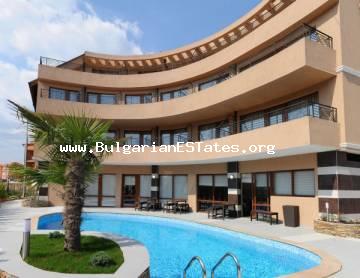
Head office location:
Bulgaria
Elhovo
Headoffice address:
8, Targovska Str., floor 2, Elhovo, Bulgaria
Phones: +359 877777960;
+359 885841230;
+359 887762939
sales@bulgarianestates.org

Town / Village: Ravda
Yard: 550.00 sq. m.
Living area: 770.00 sq. m.
Town / Village: Ravda
Yard: 586.00 sq. m.
Living area: 1169.00 sq. m.
Village of Ravda The small village of Ravda is situated between the town of Nessebar and the village of Aheloy. During communism, the Ravda area was the site of youth and student summer camps. While some camps continue to function despite the severe cutback in state support, others are undergoing privatization or restitution. In recent years, the town has experienced a building boom by picking up overflow business from nearby Nessebar and Sunny Beach as well as catering to budget tourists from the former Soviet Union.
Throughout the small center of Ravda and along the sea a number of modern new hotels are sprouting up, such as the attractively-designed Paradise, which happens to be across the street from an upscale complex belonging to the national Council of Ministers.
The town of Nessebur is located on a small peninsula in the Black Sea wich is linked with the land only by a long and narrow isthmus. It has existed for more than 9,000 years. Nessebar is best known for the old town on the peninsula. No one can say for sure whether the isthmus is natural or man-made. The largest number and best known buildings date from 11th to 14th centuries almost all of them churchies in the so called "picturesque" style: walls intersected by pilasters and lunettes, with stone, brick and ceramic ornaments and arches along the cornice. Christ Pantokrator church (10th - 11th c.)
Some of the churches have stunningly beautiful facades and interiors and are among the best preserved ones in the Balkan Peninsula. The oldest one is the Sveti Ioan Krastitel (St.John the Baptist, 10th -11th century.
Today the old part of the town has regained its original romantic atmosphere: narrow cobblestone lanes, tiny squares, two-storeyed period houses with stone-built ground levels and wooden upper floors jutting above the streets and external staircases, gift shops, pubs, tavern and lovely flower gardens.













